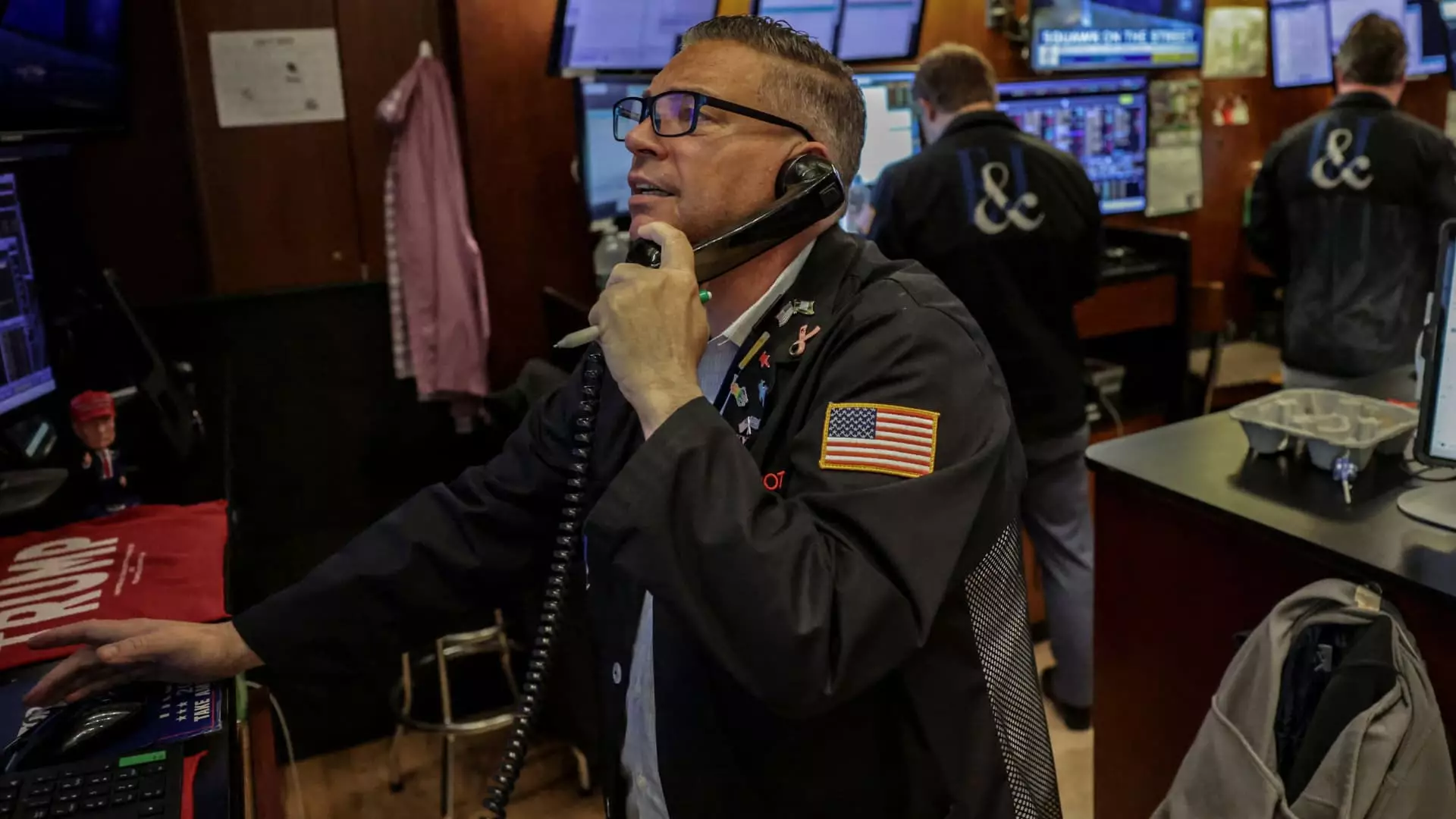In recent weeks, the financial landscape has been overtaken by an unmistakable sense of euphoria—markets are soaring to new heights with little regard for fundamental risks. The S&P 500 and Nasdaq 100 have not only reached record highs but continue to push aggressively higher, enticing investors into a false sense of security. This relentless melt-up bears the hallmark of a market that is disconnected from reality, driven by relentless optimism rather than solid economic fundamentals. While such gains might seem enticing, they are dangerously precarious, fueled by a combination of euphoric sentiment and speculative behaviors that sow the seeds of an inevitable correction.
The widespread belief that conditions will remain favorable through the summer appears increasingly fragile. Investors, especially those underexposed or sitting on significant cash reserves, are rushing back into equities, tempted by perceived low risk and strong earnings reports. Yet, the underlying narrative fails to recognize that the rally’s foundation rests more on hope than on sustainable economic growth. The overconfidence in a perpetually rising market ignores the mounting systemic risks—overleveraged positions, inflated valuations, and the potential for a sudden sentiment shift that could trigger a swift and severe downturn.
Market Fundamentals: Beneath the Surface of the Hat-Trick
While some analysts hail record-breaking earnings and declining inflation as signs of resilience, a deep critique suggests otherwise. The recent earnings season, dominated by corporations beating estimates, is in part a result of accounting maneuvers and cost-cutting that obscure underlying economic fragility. An impressive 93% of companies beating earnings estimates sounds encouraging but isn’t necessarily an indicator of broad economic health. In fact, it can be a warning sign of margin compression and overextension—corporate earnings are increasingly propped up by non-recurring factors and financial engineering rather than genuine demand and productivity growth.
Furthermore, the so-called “lowering inflationary pressures” are not a true reflection of economic stability. Instead, they reflect a pause or misassessment of inflation metrics, with trade tariffs and other distortions artificially suppressing prices. This temporary veneer of stability could vanish abruptly if inflationary pressures resurface or if inflation expectations re-anchor, forcing the Fed into tighter monetary policy and potentially roiling markets.
Despite the deluge of money sitting in cash—waiting for the “perfect” entry point—the current euphoric momentum discourages critical risk assessment. Many strategists have significantly revised upward their year-end S&P 500 targets, yet such optimism often mirrors market lagging indicators more than foresight. It’s a classic case of “buy the rumor, sell the news,” but in this environment, the rumor has become the dominant narrative, and the news may be far more sobering.
Risks of Over-Leverage and the Hidden Dangers
Speculators and hedge funds have amplified the risk on the table. Many are leveraging positions through options and derivatives—tools that do not just amplify gains but exponentially increase vulnerabilities. Using options strategies, such as buying out-of-the-money calls, might seem like a prudent hedge, but it remains a gamble on continued momentum which, history shows, is often a one-way ticket to disappointment.
The current melt-up has been propelled by the allure of exponential gains, but the parabolic run since the market topped 4,800 in April is unsustainable. It is an invitation to a painful reversion—an inevitable correction that many are too blinded by greed to see coming. Rational caution would demand investors to define their downside risk explicitly, particularly when the market’s current trajectory is fuelled more by sentiment than economic facts.
Truthfully, the most prudent approach now involves acknowledging that this surge might be a volatile and perilous phase rather than an enduring trend. Investors should question whether the apparent risk appetite is justified by fundamentals or is merely the aftermath of a speculative frenzy. Leaning into optimistic projections without regard for impending risks is a recipe for substantial losses once the inevitable correction arrives.
The Center-Right Perspective on Market Dynamics
From a center-right liberal perspective, the obsession with unrestricted market gains must be tempered by sober risk management and recognition of deeper economic vulnerabilities. Markets should be driven by sustainable growth, fiscal responsibility, and prudent regulation—not the heady rush of speculative excess. It’s crucial to remember that unchecked market euphoria often precedes brutal corrections, where the most aggressive players bear the brunt of losses.
Particularly in a climate where monetary and fiscal policies appear cyclical rather than structural, the focus should shift from chasing unrealistic returns to fostering resilient economic foundations. This entails confronting overleveraging, excessive valuations, and the temptation to interpret market euphoria as a sign of permanent prosperity. Sound investing demands skepticism, discipline, and an understanding that stability and growth are best achieved through realistic expectations and risk awareness—not through blind optimism driven by temporary trends.
The current landscape necessitates vigilance: markets may continue to climb for a while longer, but be prepared—what appears to be a “melt-up” is more accurately a warning sign of an imbalanced system teetering on the edge of turmoil. Those who refuse to recognize this risk are likely to pay dearly when the sentiment finally shifts and reality catches up with the inflated valuations.

